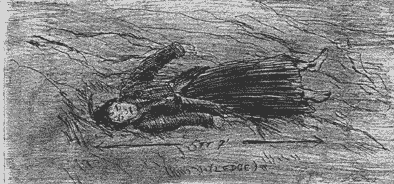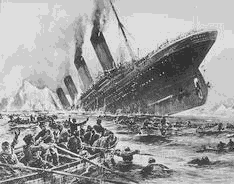

 |
There are many sane and respected people around the world today who intend to have their bodies "put on ice" when they expire. Their frozen corpses will be stored in liquid nitrogen at a temperature of minus 196 degrees centigrade until a future time when advances in medical technology will allow the deep-frozen dead to be resurrected. These attempts at cheating death through freezing are practical examples of the relatively young science of applied cryonics. The Cryonics Society of California is a pioneer in this field and started freezing newly-dead bodies in 1967, but there are now cryonic storage societies starting up in other parts of the world.
Many scientists still regard the prospect of cryogenic immortality as a slim and laughable chance, because it is still difficult if not impossible to freeze human tissue fast enough to avoid vital-cell destruction. This problem will undoubtedly be resolved in the not-too-distant-future, and already rudimentary human embryos have been successfully frozen at sub-zero temperatures. Moral watchdogs are concerned at the pace of progress in cryonics, and recent legislation in Britain has limited the period scientists can hold the embryos in cold storage.
We don't have to look to cryogenics to see examples of deep-frozen mammals because nature has already beaten us to it. In the summer of 1977, a perfectly-preserved specimen of a six-month-old baby mammoth was disinterred by a bulldozer from permafrost in the Yakutsk Republic of the former USSR. This baby mammoth, nicknamed Dinah, is over ten thousand years old. In 1900, a larger Russian mammoth was found in Berezovka standing upright in the Arctic permafrost. The frozen beast was so perfectly preserved by the sub-zero temperatures that the ancient buttercups it had been eating when it died were still stuck to its tongue. No reason has ever been given to explain why the mammoth died so suddenly it never had a chance to swallow the flowers, but the beast seems to have been literally frozen in its tracks.
Human bodies that have been frozen naturally in Arctic conditions have been reported from time to time. In August 1984, scientists chipped through five feet of gravel and permafrost on Beechley Island, which is situated at the entrance to Canada's Wellington Channel. What the excavating scientists came upon was breathtaking - three graves containing the bodies of sailors who had died in 1846. One of the corpses was perfectly preserved. The body was subsequently identified as that of seaman John Torrington of the ill-fated Franklin Arctic expedition. Sir John Franklin had left England in 1845 on a mission to find the Northwest Passage, a long-sought sea route from the Atlantic to the Pacific by way of Canada's arctic islands. The British Government and its Admiralty were confident that Franklin would find the Passage, and they gave him two ice-region ships named "Erebus" and "Terror" which had been completely overhauled and refitted for the expedition. Franklin and his men perished in the Arctic Circle before they could find the Northwest Passage, but the fate of the ships is unknown. However, in 1851, the captain and crew of a brig named "Renovation" were astounded to see two full-sized ships perched on top of a huge iceberg in the North Atlantic. Two old seadogs on the "Renovation" identified the ships through a telescope; they were the frozen wrecks of "Erebus" and "Terror". The 19th century ice-bound wrecks were allegedly seen once more in the early 1950s still embedded in a berg.
There have also been more sinister reports of people frozen in ice. The following story was buzzing across the Internet in the late 1980s and was even reported in a BBC radio bulletin in Britain.
According to the story, in March 1988, towards the end of the Cold War, a Russian destroyer was on maneuvers in the North Atlantic, about 800 miles south of Iceland, when a lookout on the ship with high-powered binoculars spotted an iceberg on the horizon. There was nothing unusual about an iceberg being in that area of the ocean in March, but what excited the lookout was the curious dark spot he could see on the iceberg. As the berg floated nearer to the destroyer, the lookout zoomed in on the dark spot, and sighed in disbelief; the dot was the figure of a woman lying on a ledge, covered in a thin layer of ice. She was dressed in a black jacket and a long black dress, and was lying on her back.
The captain of the destroyer immediately dispatched a motorboat to take a closer look. Two divers left the boat and swam over to the ledge of the iceberg to take a closer look at what was obviously the frozen corpse from some sea disaster. Three more men, including a physician, came off the ship and spent almost an hour freeing the body from the ice. The woman, who looked about twenty-five to thirty years old, was perfectly preserved, except for one ankle, which was blackened by the tissue-destroying ice crystals. However, the out-dated clothes she wore indicated that she had been frozen for a long time, perhaps fifty years or more. The corpse was put into a body bag and taken on board the Russian destroyer, where it was put in refrigeration until the ship returned to the Soviet Union.
The corpse was then transferred to a military hospital in Leningrad and slightly thawed to just under room temperature. Even the lipstick on the woman's face looked fresh, and the woman looked as if she was only sleeping. Suddenly, the woman's eyes flew open. It seemed to be just a reflex action, and not a sign of life. The blue eyes were slightly bloodshot, but looked animated. All of the scientists present recoiled in shock. The eyes then rolled upwards and the eyelids of the corpse flickered, then closed.One report said that the scientists tried unsuccessfully to resuscitate the corpse by firing a high voltage current through its chest, but the lungs were full of ice and the other internal organs were damaged beyond repair.
In the pockets of the woman's coat, several papers and belongings were found. A brooch, a purse with old money that dated to the early 1900s, and a number of documents which stated that the woman had been a passenger on the Titanic liner, which sank after hitting an iceberg 350 miles southeast of Newfoundland in 1912.
 |
It was surmised that the woman had probably fallen or jumped overboard from the stricken vessel, and had probably somehow been swept onto one of the icebergs drifting through the waters. The story was reported in some Russian satellite states, but the Soviet Union allegedly hushed up the strange find because the Russian destroyer that found the ice-bound corpse had been involved in electronic eavesdropping on very-low-frequency broadcasts from American submarines.
According to further reports that leaked out of the crumbling USSR in 1990, scientists removed the frozen woman's ova cells and were attempting to clone her.
�Tom Slemen 2004
This story reproduced with permission from Tom Slemen
Visit Tom Slemen's official web-site at http://www.slemen.com/
